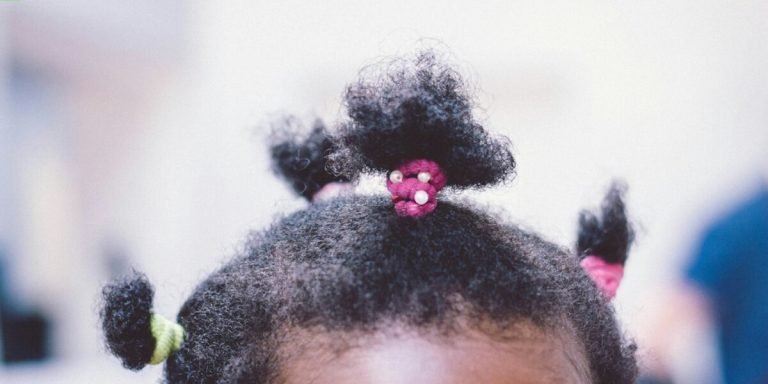How to Make Your Own Hair Care Products for a Natural Approach
Have you ever wondered how to create your own hair care products? The beauty industry offers a vast array of commercial shampoos, conditioners, serums, and gels. Yet, increasing numbers of people are acknowledging the extensive list of chemicals in these store-bought products and are choosing natural alternatives.
Making DIY hair care essentials at home lets you control the ingredients and customize them to your hair’s needs. Use natural ingredients like coconut oil, honey, and tea tree oil to avoid side effects like dry strands or scalp irritation that chemical products often cause.
Did you know?
Did you know that coconut oil, used commonly in DIY hair care products, is one of the few oils scientifically proven to penetrate your hair cuticles and enhance hydration? This makes it a great addition for homemade natural treatments!
Unveiling Natural Ingredients for DIY Hair Products
An increasing number of people are revolutionizing hair care by turning to natural ingredients. They are shifting because they’re becoming aware of the harsh chemicals in commercial products that can damage their precious locks. Therefore, creating DIY hair products with natural resources is a cost-effective practice that gives complete control over what touches your scalp.
Natural ingredients, loaded with essential nutrients, support healthy hair growth and maintenance. For example, coconut oil, shea butter, and aloe vera nourish the hair significantly. They help maintain a healthy mane by preventing common issues like dryness or dandruff.
Homemade beauty concoctions enable customization to suit individual preferences or needs. For color retention, include herbs like rosemary. To combat frizz, add honey to the recipes. By understanding these ingredients, you can create tailored solutions that achieve desired results in appearance and improve the overall health of various hair types.
Crafting Organic Shampoos: A Step-by-Step Guide
Crafting your own organic shampoos can be a fun and rewarding experience. So, let’s dive into how to make your own hair care products with natural ingredients right in the comfort of your home.
Start by selecting an unscented shampoo base that suits you best. You may find various types available online or at health stores; it could be coconut-based, castile soap based – select according to your preference.
Next comes choosing essential oils for fragrance and added benefits. For promoting growth and reducing dandruff, rosemary oil is excellent whilst lavender soothes the scalp and smells divine too! Add around 10-30 drops per one cup of shampoo base depending on scent intensity preferred.
Do not forget nutrient-rich additives like honey which moisturizes beautifully or chamomile tea (brewed strongly) that enhances natural highlights in blonde hair when mixed well into diluted shampoo bases especially those made from Castille soap!
The Art of Homemade Conditioners and Masks
To mix your own conditioner or hair mask, blend ingredients with precision and knowledge. This art becomes even more vital when customizing products for your unique hair type. We’ll guide you through natural elements and their benefits as you embark on this DIY hair care journey.
Coconut oil ranks among the top ingredients for DIY conditioners due to its moisturizing properties. It penetrates deep into the hair strands to nourish them from within. When you add coconut oil to your conditioner recipe, you can effectively fight dryness and breakage while promoting shine.
Next comes honey – nature’s humectant which attracts moisture from air keeping our locks hydrated throughout the day. Blend it with olive oil – rich in vitamins A & E providing protection against damage caused by environment or heat styling tools, makes a delectable conditioning treat!
Aloe vera gel works wonders too! Its proteolytic enzymes repair dead skin cells on scalp paving way towards healthier follicles thus encouraging growth of luscious mane over time.
Avocado isn’t only meant for salads but also finds significant place among homemade beauty recipes due to presence of proteins enhancing strength coupled with vitamin E fostering overall health.
Essential Tools and Techniques in Home-based Hair Care Production
Embark on the journey of creating your own hair care products to experience both excitement and fulfillment. Tailor-make solutions that cater specifically to your hair type, texture, and individual needs. In 2023, the power to influence personal health and wellness is clearly in our hands; hair care is no exception.
Familiarize yourself with basic tools and techniques essential for home-based product production. Essential instruments include:
- A hand mixer or blender to seamlessly incorporate ingredients.
- Heat-resistant containers to melt solids like shea butter or beeswax, which are necessary for DIY conditioners and pomades.
- Dilution ratios for working with potent ingredients like essential oils.
- Emulsification to ensure oil-based components blend harmoniously with water-based counterparts in creamy concoctions without separating.
Understanding these foundational elements simplifies the once daunting task of starting from scratch at home. With just a few pieces of equipment and key procedural knowledge, you can craft personalized treatments and ensure each batch meets professional-grade standards. This approach beautifies hair strands from root to tip in the comfort of your own home.
Utilizing Household Items for Mixing and Storing
Creating personalized hair care products at home can be an exciting yet daunting task. But did you know that one of your primary resources could already be within arm’s reach? Your household items!
Let’s explore how to make your own hair care products using common things around the house.
First, a trusty mixing bowl is essential. You don’t need anything fancy here; any clean, medium-sized bowl from the kitchen would suffice for most mixtures. The ceramic or glass types are preferred as they tend not to retain residues from previous use.
Next, consider spoons and spatulas for stirring up your ingredients into a smooth concoction. Again, these tools aren’t exclusive to beauty stores; just grab those lying in your kitchen drawer!
A handheld blender might also come handy when dealing with stubborn ingredients refusing to blend seamlessly together – remember it needs thorough cleaning before whipping up tomorrow’s pancakes though!
Let’s discuss storage options. Mason jars, known for their air-tight seals, extend product shelf life and maintain quality while adding aesthetic appeal. Alternatively, you can repurpose cleaned old cosmetic containers as excellent storage solutions.
Consider using small travel-size bottles for sampling tests of new formulations on smaller scales. Repurpose food jars for bulkier batches, ensuring you remove labels and strictly adhere to sterilization procedures to prevent remnants from tainting our divine potions under construction.
Mastery of Blending: Techniques for Perfect Consistency
Blending is a crucial part of creating your own hair care products. Mastering this technique can lead to the perfect consistency for any product you desire, be it shampoo, conditioner or even hair masks.
Understand the base ingredients first. Most DIY hair care products use simple bases such as coconut oil or Shea butter for their natural benefits and availability. Add various natural ingredients to these bases according to specific needs, like Aloe Vera for hydration and tea tree oil for dandruff control.
Blend your ingredients with precision to make effective hair care products at home. If you’re not ready to invest in equipment, start with manual tools like spoons and bowls. Consider using an electric handheld blender to simplify the process as you advance.
Temperature also plays a big role whilst blending; some ingredients require heating before they can emulsify properly while others need cooling periods during procedures so that beneficial properties are not lost under heat pressure.
Preserving Your Handmade Hair Care Creations
Dive into the world of homemade hair care for a rewarding endeavor. Once you master creating personalized products, they align more closely with your unique hair needs than store-bought alternatives. However, an important challenge is to preserve these handmade creations properly to ensure their efficacy and longevity.
Proper storage ensures the preservation of key ingredients. Note that natural ingredients lack the preservatives found in commercial products, necessitating refrigeration for most fresh fruit concoctions or other perishable items to retain nutrient value for longer periods and provide sustained benefits with repeated use over time.
Additionally, hand-crafting treatments in smaller batches lets you adjust recipes to meet evolving requirements. You also reduce waste from products degrading past their shelf-life, which is often shorter than that of mass-produced items. Thus, remember that optimal results depend as much on nature’s freshness as they do on strategic storage habits!
Natural Preservatives to Extend Shelf Life
Innovative minds have embraced the trend of making their own hair care products, aligning with eco-friendly practices and using natural ingredients. However, a common challenge is knowing how to extend their shelf life. Here are some notable natural preservatives you can use.
1. Grapefruit Seed Extract: Due to its antimicrobial properties, grapefruit seed extract serves as an effective preservative for your handmade hair care creations. Just add a few drops to prevent bacterial growth and keep your concoctions fresh longer.
3.Rosemary Oil Extract (ROE): ROE demonstrates strong antibacterial features that play vital roles in extending the usable period of homemade treatments while offering additional benefits such as boosting shine and reducing dandruff.
5.Glycerin – Glycerin keeps moisture locked into your products thereby discouraging bacterial or fungal proliferation thus maintaining freshness factor intact across uses .
Effective Storage Solutions for DIY Hair Essentials
As more people turn to do-it-yourself solutions for hair care, the topic of proper storage becomes quite vital. If you’re wondering how to make your own hair care products and keep them fresh as long as possible, we’ve got some excellent tips.
Firstly, let’s discuss containers. Glass stands out as an excellent choice because it is non-reactive. It prevents interaction with ingredients and avoids releasing toxic substances, thereby extending their shelf life. Additionally, using darker glass bottles, such as amber or cobalt blue, protects DIY hair concoctions from sunlight that might accelerate expiration.
Second on our list is plastic – but not just any type! Your best bet would be those in food-grade quality which are safer options compared to regular ones since they don’t leach harmful chemicals into your creations over time.
Location matters too when storing handmade essentials. A cool dry place away from direct sunlight works perfectly well because heat and light might degrade the product’s effectiveness faster than usual.
Next comes an often overlooked aspect – cleanliness before storage. Ensuring the utmost cleanliness for homemade items is vital! Always clean every used utensil, including bowls, spoons, and others thoroughly before use. This prevents potential bacterial growth in stored goods and wards off rapid spoilage.
Conclusion
Here are the secrets to making your own hair care products. It’s time to roll up your sleeves and start mixing! By creating homemade solutions, you take a natural approach to hair care and maintain complete control over the ingredients in your products, avoiding the unpronounceable ingredients often found in commercial ones.
Our website is virtually brimming with resources on holistic hair care and maintenance practices. Feel free to explore more articles for additional insights or answers to your specific queries. Let’s continue to lead the charge toward a healthier mane together by embracing natural alternatives—one DIY recipe at a time!







